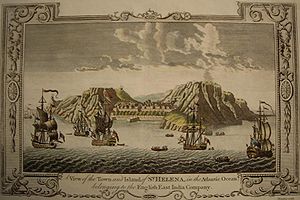I imagine few people have been to Iceland without visiting Reykjavik at some point, and we were no exception.
Arriving at our hotel there from the airport at 1am I was surprised by the 'night' sky. Although I knew nights were short in Iceland at this time of year, I thought it would be like Scotland where nights are brief but it still gets dark. But this isn't the case - at this time of year the middle of the night is only as dark as this:
| Reykjavik night sky, 1am |
The next morning we took a walking tour of the city sights; first stop was the city's cathedral, Domkirkja, built in 1847.
| Domkirkja |
Next door is the Alþingishúsið, the small 19th century National Assembly - the country has 63 members of Parliament. Iceland has the world's oldest existing parliament, the Alþing, founded in 930, and this building is just the modern manifestation of an ancient system.
| Alpingi - a modern annexe was added to the side in 2002 |
| part of the city centre |
The Safnahúsið (literally 'museum house') was constructed 1906-1908 to house the National Library, before it moved to another building in 1940.
| Safnahúsið, old National Library building |
The statue below shows Ingólfr Arnarson, considered to be the first permanent resident of Iceland. Arriving in 871 legend says that he tossed his öndvegissúlur (high seat pillars) overboard and settled where the gods washed them ashore. He named the place Reykjavik, which means 'smoky bay', due to the steam rising from the geothermal vents.
| Ingólfr Arnarson |
Although it isn't the city's cathedral Hallgrímskirkja is the country's largest church and its 6th largest building. Built between 1945 and 1986 it was designed to resemble basaltic lava flows.
| Hallgrímskirkja church |
Outside is a statue of Leifur Eiríksson, the first European to discover North America around the year 1000 AD. He was probably born in Iceland and the statue was a present from the USA in 1930 to mark the 1000th anniversary of the Alþing.
| Leifur Eiríksson |
Inside the church is an organ with 5275 pipes.
| organ, Hallgrímskirkja |
Tjörnin is a small lake/large pond in the middle of the city with a large population of birds. In the winter geothermal heat is used to prevent part of the lake freezing over so the birds can still swim there.
| Tjörnin (The Pond) |
A small park lies to the south of Tjörnin and we were amused to watch a cat trying to catch an arctic tern there. Needless to say the cat didn't succeed and the bird almost seemed to enjoy teasing it.
| arctic terns |
North of the pond is Reykjavik's Ráðhús or City Hall, which has an interesting 3D map of Iceland.
| 3D map of Iceland, Reykjavik Ráðhús |
Ingólfstorg is a stone square in the city centre with geothermal steam vents.
| steam vents, Ingólfstorg square |
Reykjavik was designated UNESCO City of Literature in 2011 and literary quotes stencilled on the pavements were still visible this year. Here are two I particularly liked.
One of our days in Reykjavik was rather rainy, so we visited the Perlan complex (which my guide book
described as looking like half of Barbarella's bra!).
| Reykjavik under a rainy sky (Hallgrímskirkja to the left) |
| Reykjavik under a rainy sky, seen from Perlan |
Perlan is a complex with a hemispherical structure placed on top of (old?) hot water storage tanks, and it houses the Saga Museum, shops, eating places and a viewing deck (see more about Sagas below).
| Perlan complex |
Later as it was still raining we went to the National Museum which was very interesting, with well translated English explanations throughout. I also loved the folding chairs that you could carry round the museum! One of its exhibits is Guðbrandur's Bible, one of 500 bibles that were printed in Icelandic in 1584 and which are considered as masterpieces of the printer's art.
| Guðbrandur's Bible |
| printing plates, woodcuts & printing blocks (16th-18th century) |
Finally, a word about food. Here's a copy of the menu from a restaurant in Hafnarfjörður - note the sheep head, foal, whale; we also saw guillemot. These are all traditional Icelandic food, but being the fussy eater that I am needless to say I didn't try any of them!
| menu, restaurant in Hafnarfjörður |
Related posts:
Suggested reading:
Iceland publishes the greatest number of books, and produces the most writers and literary translations per capita of any country in the world.
- The Sagas are medieval family sagas. Written in the 12th and 13th centuries they describe events that took place in Iceland in the 10th and 11th centuries.
- Halldór Laxness won the Nobel Prize for Literature in 1955 and is considered Iceland's literary genius.
- Arnaldur Indriðason writes crime fiction which is based in Reykjavik and is one of Iceland's most popular writers. His work has been published in 26 countries and translated into 20 languages.






